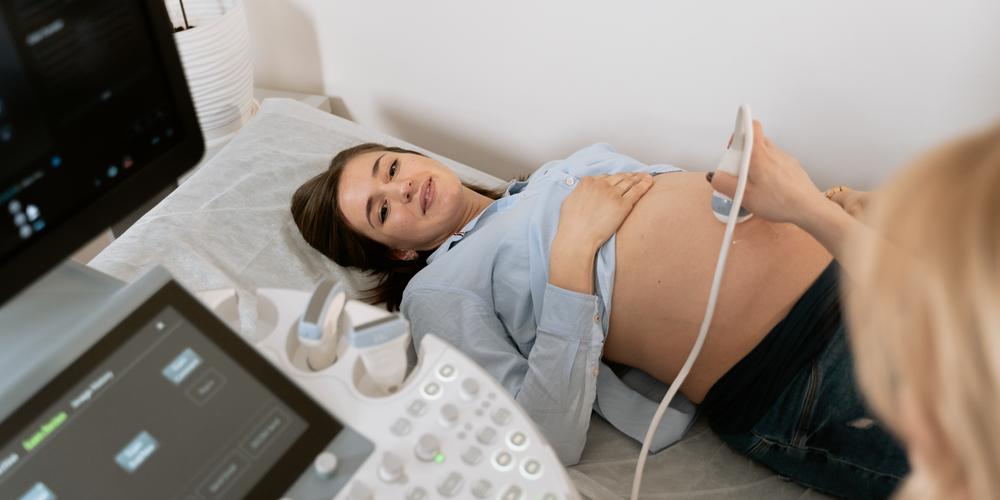
- Home
- Research
- Find research
- Cognitive development in a population-based cohort in the SELMA study
Cognitive development in a population-based cohort in the SELMA study
I catch up with Maria Marinopoulou, psychologist and PhD student at the Gillberg Neuropsychiatry Centre to talk about her highly interesting research.

What made you interested in research? What topics interest you?
I have always had a natural curiosity to find out things and experienced early in my psychology education that I would like to do research at some point during my professional life.
At Panteion University in Athens, where I did my undergraduate studies, there was a focus on cognition, where we got to delve deeper in various studies of the subject. The structured, but at the same time creative, approach that exists in research appealed to me. Our cognitive development, neuropsychology and disabilities have always interested me as a psychologist, as well as aetiological research (both genetic and environmental research) on developmental disabilities (ESSENCE). I am also interested in psychometry (how to measure different psychological characteristics including cognitive functions with the help of tests) and how different abnormalities in the structure and function of the brain affect function and quality of life in everyday life.

What is your doctoral project about?
My doctoral project is carried out within the framework of the SELMA study, which is a longitudinal prospective study and is carried out in the county of Värmland. The focus of the SELMA study is to assess whether exposure to endocrine-disrupting chemicals (EDC's) early in life is associated with the development of chronic diseases or developmental disabilities. In SELMA, we follow a cohort of children. My doctoral project focuses on cognitive epidemiology and aims to investigate neuropsychological functions in this population-based cohort at the age of 7-8 years. The data collection for the doctoral project has been completed and in total there are neuropsychological data from approximately 1000 children.
What made you become interested in these specific research questions?
I was informed about the SELMA study by one of my research supervisors who is the researcher responsible for the part of the study I am active in. Based on my background as a neuropsychologist and my interests, it felt relevant for me to become a doctoral student with that research focus.

What questions do you want answered?
The first question is longitudinal and concerns how children who have limited vocabulary at the 2.5 years language screening perform on neuropsychological examination at 7 years of age. Another question concerns the relationship between working memory, executive function and hyperactivity/attention in the SELMA cohort, i.e., in a non-clinical group of children. In this group, it is also interesting to study whether there are children with impaired results in terms of working memory in psychological testing but where the parents do not see executive difficulties when assessing the children's function in everyday life, and if so, what is it that distinguishes this group. An additional question is based on social interaction in the cohort, where the purpose is to evaluate how results from two different questionnaires that are intended to assess that function are consistent with each other. We also want to evaluate whether deficiencies in the ability to socially interact are associated with difficulties in prosocial behaviour and other behavioural difficulties.
How did you go about it?
At the start of the SELMA study, all pregnant women in county of Värmland were invited to participate in the study. In connection with participation in the study, samples were taken from urine and serum to measure the prenatal level of EDC's in the women and thereby what the foetus has been exposed to. Since then, the mother-child cohort has been followed up on various occasions. The study has access to CNC data in which there are data from language screening of children at 2.5 years of age. Starting in the autumn of 2015, when the cohort's children began to turn 7 years old, the child was invited to participate in a developmental assessment. Neuropsychological tests with the children and questionnaires given to parents were used to examine the children's development. We used two comprehensive neuropsychological tests with good psychometric properties. The questionnaires cover several areas of development in order to obtain information on how the children's development is compared to what is expected for that age. The questionnaires also provide a measure of how the children function in everyday life. Both the tests and the questionnaires are widely used in assessing children's development in various settings, both in Sweden and internationally.

What significance do the results have from a research point of view?
From a research point of view, SELMA has advantages in the form of a large population-based cohort that has undergone an extensive neuropsychological examination with both tests and questionnaires. This provides good opportunities for in-depth knowledge of general cognitive development and how different cognitive functions affect each other. The results will be of value to the other researchers within SELMA when studying exposure to endocrine disruptors and cognitive development. From a greater perspective, the results may thus be of value for risk assessment of chemicals as well as further research on potential risk factors for development disabilities such as ADHD, autism and intellectual disability.
What significance do the results have in practice and thus for clinical work?

The children who participate in SELMA come from the general population, which means that we meet both children with and children without disabilities. It contributes with knowledge of typical development but also difficulties within ESSENCE that is valuable to clinics in various ways. In the first article of my dissertation, we have shown that there is a connection between a limited number of words at language screening at the age of 2.5 and cognitive function at the age of 7, especially limitations regarding working memory. This means that limitations in expressive language development early in life can be a marker for later developmental difficulties. It is therefore necessary to follow children with early difficulties and stimulate their language development. Furthermore, by having a large number of data from different questionnaires in a group of children aged 7-8, you can contribute to standardisation work on certain instruments and highlight aspects that may be important to consider when screening and psychologically assessing children using the different scales and test instruments.
What are you doing right now and in the future in terms of research?
Right now I am finishing the manuscript for the second part of the dissertation, which is about working memory, executive function and attention. After that, I look forward to the half-time control that is booked for the end of October. Until then, the plan is to have begun my third sub-project, which will focus on social interaction and autistic traits.
In her free time, Maria spends a lot of time training, especially cycling. Otherwise, Maria enjoys walking in the woods, meeting friends and family, listening to music, reading and watching bike races. Pleasant restaurant visits and drinking good coffee are other favorites. Maria likes to discover new places so road trips to nature and new cities are very much appreciated.